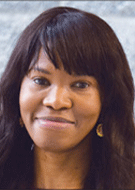AI Network in Africa Seeks to Solve Resource Disparities By Uniting Imaging Stakeholders
Local health care professionals addressing infrastructure, data quality, policy and capacity challenges


In Africa, an infrastructure that utilizes an AI “ecosystem” could help place radiology practices in a central network with other stakeholders and researchers throughout the continent and help close gaps in care for underserved patients.
But what if technology can’t get to those populations or doesn’t work when it gets there?
Factors like infrequent scanner maintenance, network connectivity hiccups and unreliable power sources make it challenging to apply AI in a clinical setting in resource-constrained countries. High staff turnover and overworked personnel, sporadic access to contrast materials and a general lack of clinical imaging protocols create a recipe for ambiguity and uncertainty.
“All of these factors result in lower quality and less breadth of data for developing high-value imaging innovations,” according to Udunna Anazodo, PhD, assistant professor of neurology and neurosurgery at the Montreal Neurological Institute at McGill University, Quebec, and coauthor of the Radiology: Artificial Intelligence editorial, “AI for Population and Global Health in Radiology.” “More importantly, the lack of national data policy and regulatory frameworks make adoption of routine AI imaging solutions by and large unattainable in Africa.”
Collaboration To Create AI Solutions
Dr. Anazodo directs the Africa Neuroimaging Archive (AfNiA), a project seeking to bring together key opinion leaders in imaging data science and experts in African health care delivery to enable the formulation of policy and regulatory frameworks for discovery and implementation of AI imaging innovations in Africa.
AfNiA will be creating a publicly available imaging repository of annotated brain MRI studies aggregated from the region to cultivate homegrown AI innovations as the standard of care. However, according to Dr. Anazodo, each AI tool needs clinical validation and regulatory approval. These processes require collaboration among stakeholders— computational imaging scientists, imaging physicists, radiologists, the industry partners that roll out the tools and the agencies that regulate and fund health care delivery.
In addition, for resource-constrained countries to benefit from global and population health AI solutions, models must be capable of producing imaging biomarkers that enable country-specific and population-level assessments of relevant disease traits and trends. Barriers also have to be broken across all settings, from those where resources are limited to those where they are plentiful, Dr. Anazodo noted. If initiatives like AfNiA can deliver AI imaging innovation solutions to Africa’s complex health care problems, those solutions can be readily adopted in other resource-constrained settings, as compared to solutions from better resourced regions that may not be as easily adaptable.
“More effort should be put into understanding the problem from a population health standpoint and into designing scalable solutions in which AI is a part of a larger intervention, guided by rigorous implementation of science strategies,” said editorial coauthor Farouk Dako, MD, MPH, director of RAD-AID Nigeria, an international organization that brings radiology to resource-constrained areas by delivering education, equipment, infrastructure and support.
“If radiologists don’t view integration of AI as essential, we risk other specialties attempting to utilize AI without the supervision of a radiologist. This is a pattern we are already starting to observe in some resource-constrained countries in which policies guiding the scope of medical practice are not well defined or enforced. Adopting AI is critical to optimize our future practices, and we should therefore invest in its implementation.”
FAROUK DAKO, MD, MPH
“We have established the MAI Lab to enable a streamlined and connected pipeline throughout the product development life cycle, from design to market testing to regulatory approval and rollout,” Dr. Anazodo said.
Over the next two years, MAI Lab will focus on delivering the AfNiA project and addressing barriers to infrastructure and staffing that fragment the AI ecosystem. The project will offer training and networking to radiologists, computational imaging scientists, data policy experts and imaging vendors worldwide.
RSNA Assists In Developing Brain Tumor Segmentation Dataset
In 2021, RSNA launched the 10th annual Brain Tumor Segmentation (BraTS) challenge in partnership with the American Society of Neuroradiology (ASNR) and the Medical Image Computing and Computer Assisted Interventions (MICCAI) society. The BraTS 2021 challenge focused on brain tumor detection and classification, utilizing multi-parametric magnetic resonance imaging scans. It represents the culmination of a decade of BraTS challenges, offering a large and diverse dataset with detailed annotations and an important associated biomarker.
The BraTS challenge also addressed two clinically relevant tasks, to develop the most accurate automated method to measure the size of the visual components of a cancer and to develop a reliable non-invasive method to predict the presence of specific genetic features in the tumor from the MR images alone.
RSNA hosts AI challenges to spur the creation of AI tools for radiology. Learn more about RSNA’s AI Challenges at RSNA.org/AI-Challenge.